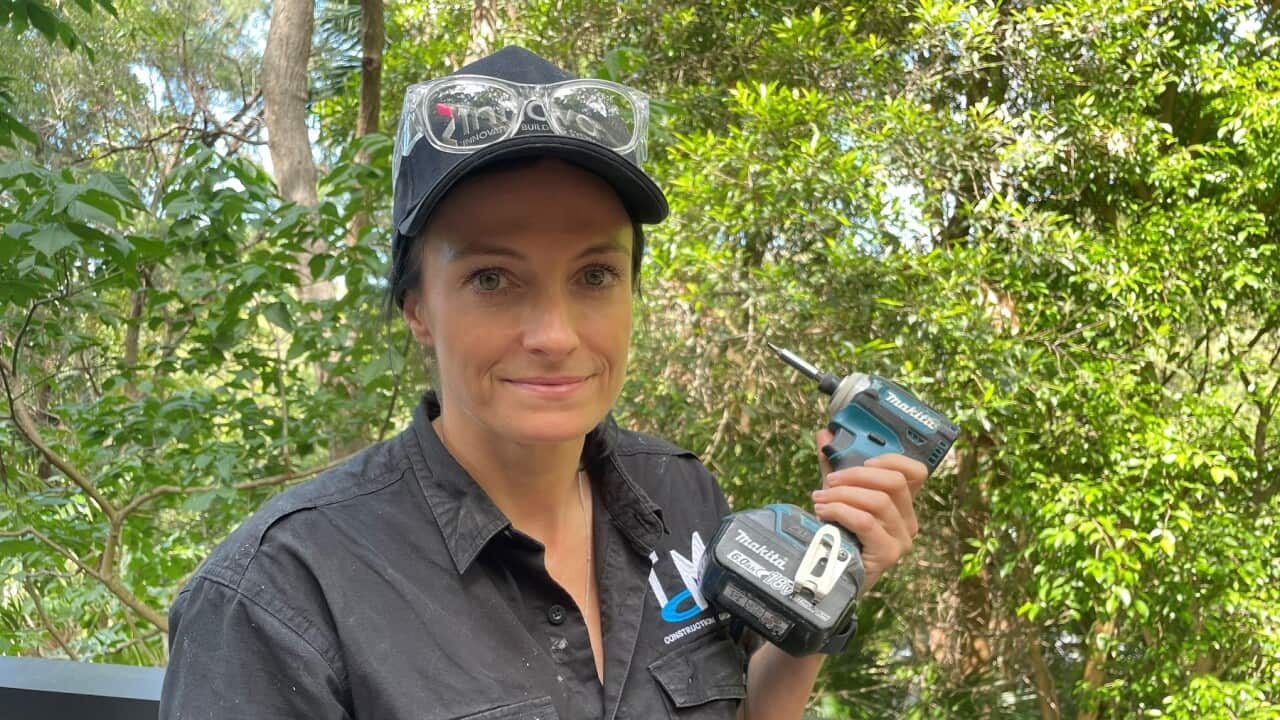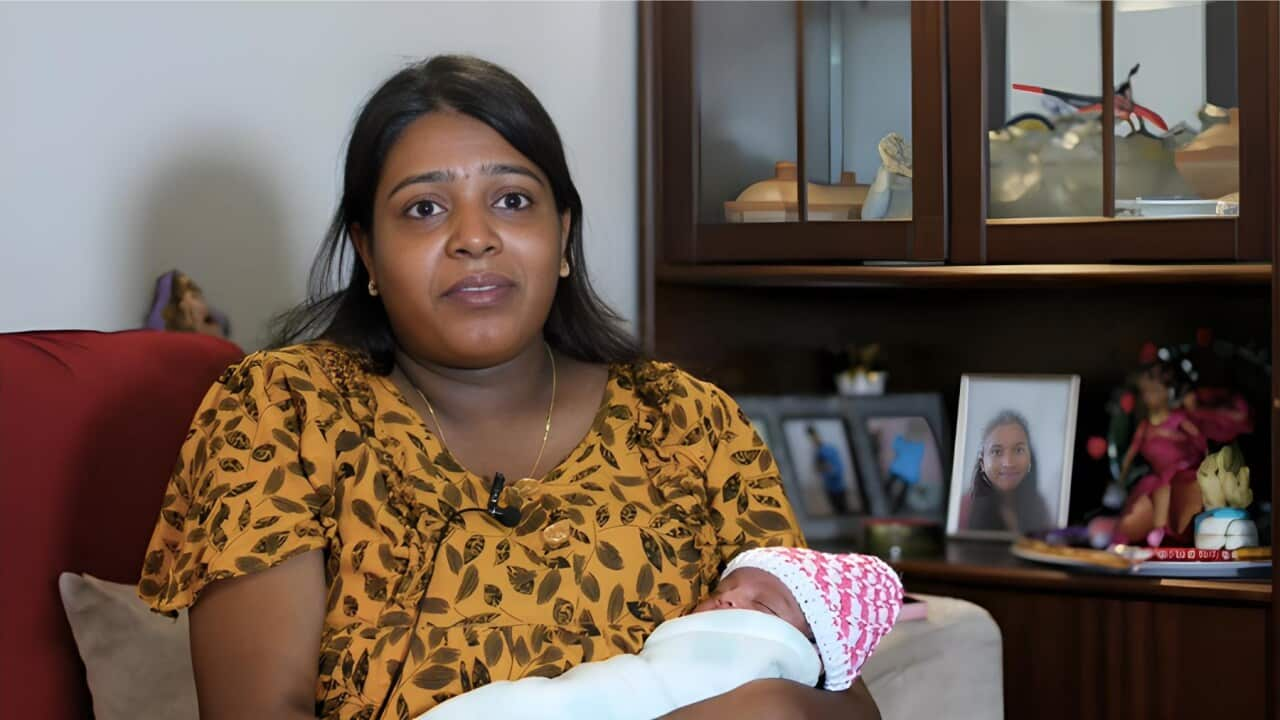TRANSCRIPT
Kim Taylor is a qualified carpenter working on a property north of Sydney.
Completing precision work is a daily job for the 43- year-old, who began training eight years ago.
"I am very proud that I'm qualified now in running sites. I was 36 and qualified when I was 41 and I've been qualified two years now. So, I started very late. I was very self-conscious when I first started and felt out of place – yeah like I didn't belong."
It’s a common problem for women on work sites.
Ms Taylor says learning a trade isn’t easy in a male-dominated field like carpentry.
"When I first started, I think that some of the guys on site didn't think that I should be there, that I wasn't capable. But it's all about planning and if we are lifting frames or we need help, we organize that or we have devices that can help us."
Ms Taylor says she is now accepted and is working full-time with her brother on construction sites across the city.
But she knows many women still struggle.
"So many comments about y’know getting in the kitchen, making a sandwich. Some people are so nasty on socials towards women, I don't understand it. It feels like maybe they feel threatened. I don't know why they have to put women down, like why not just accept that we are there just to do a job."
It’s an ongoing problem for the construction sector, according to Master Builders Association CEO Denita Wawn.
"Certainly, it is an unfortunate situation whereby when you have a highly male dominated industry, sexism and discrimination and harassment does exist. We need to empower women to call it out and feel as though when they do call it out, their job is not in jeopardy."
Ms Wawn says half a million more skilled workers - including women - are needed to help tackle Australia’s housing crisis.
"One million to 1.2 million homes to be built over the next five years. If we do not resolve these shortages, then we're simply not going to house all of the population of Australia. It's really concerning at the moment that the cost of a new home is nearly 40% higher than what it was pre-COVID, and we know that that is predominantly around shortages of labour. "]]
Ms Wawn admits there are other barriers for women entering construction, too.
A wide gender pay gap means, on average, women earn far less than men.
"Not only do we have a dearth of women across the workforce, but also we don't have women in the higher-paying roles. When you only have 2 per cent of the workforce of trades are women, then of course we are going to see that disparity. It's not good enough that we have that, but it's a reflection of the current state of the workforce generally in our sector and something that we are striving very, very hard to change."
Carpenter Kim Taylor is working for entrepreneur Ozge Fettahlioglu, whose business imports building materials from her homeland, Turkiye.
The designer also pro-actively hires female tradies.
"For this house, I especially wanted to work with female builders and really looked for it. Generally female carpenters, they will have the similar skills but they're going to bring diversity in the workplace and that's what is important for me."
As a female founder who has faced discrimination herself, Ms Fettahlioglu would like to see more women breaking down barriers in trades.
And she says incentives are needed to attract more female apprentices into construction.
"Not many students see this as a career opportunity, even though they want to do something hands-on. Start with education and then work on leadership, workplace training to change the cultures and some policies in place."
Kim Taylor isn’t rushing to start her own small business but urges other women to follow her lead and reap the rewards.
"I found my passion in carpentry and y’know so many women and young girls out there, it could be their passion too. The skills that you learn, really are life skills. Yeah, the dream is to get my own house soon and renovate that. Yeah that's the dream!"













